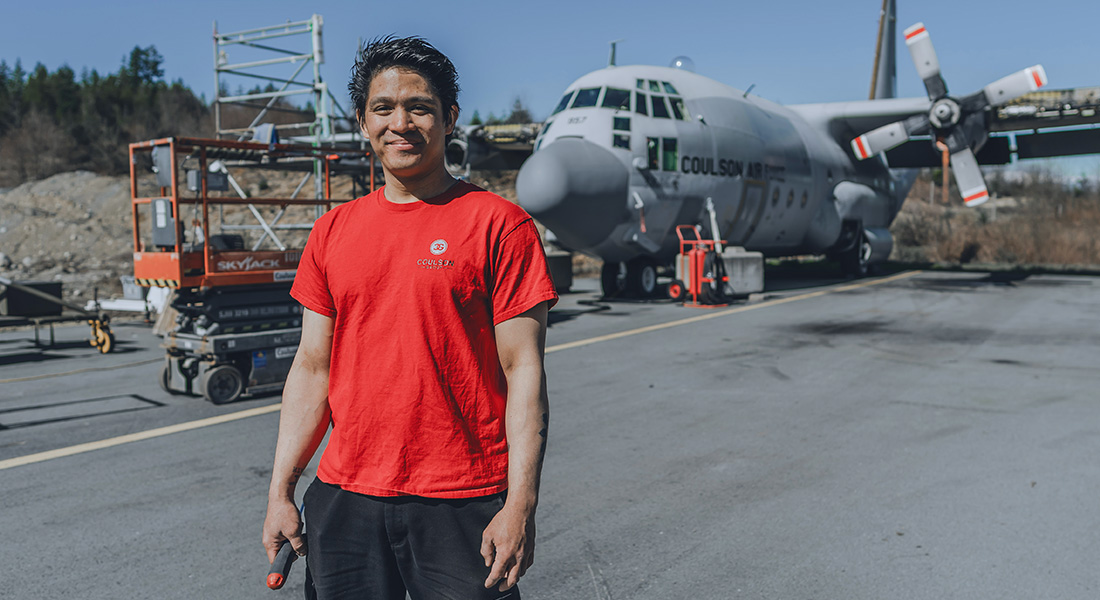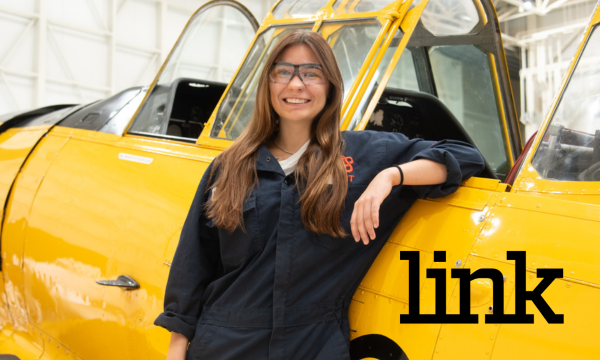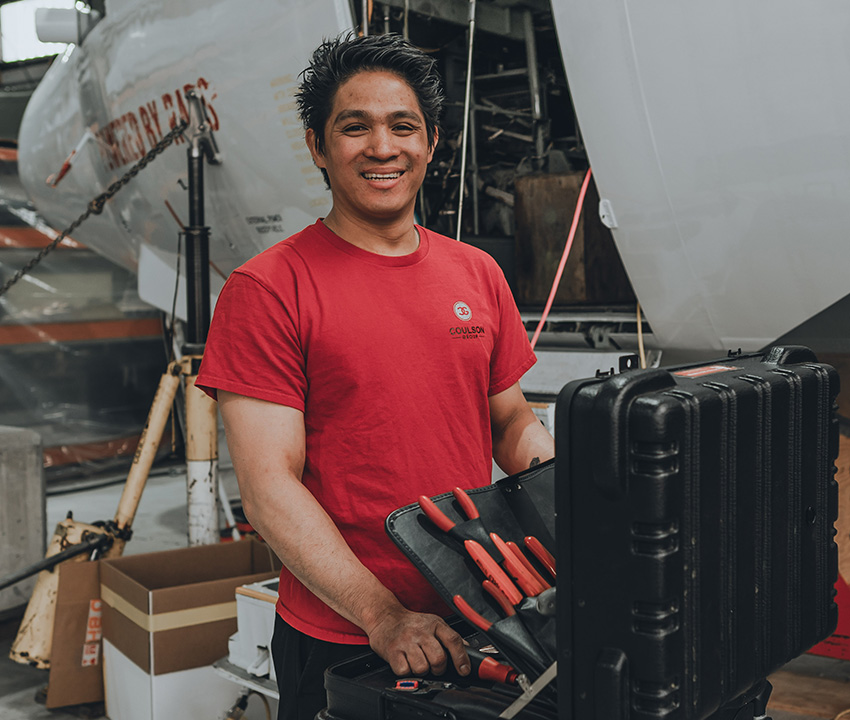Leonard Sebastian (Aircraft Maintenance Engineers Technology ’20) works with aerial firefighting company Coulson Aircrane Ltd. in Port Alberni, BC. Though summer is wildfire season, Sebastian says winter is busiest for him and his crew.
To ensure the safety of each aircraft — from Lockheed C-130 Hercules and Boeing 737 air tankers to Cessna Citation 550s — Sebastian disassembles every engine, wheel and instrument in their fleet, thoroughly checking each piece before putting it all back together according to aircraft maintenance specifications.
Sebastian says there’s a common misconception that airplanes are used to fight fires when, in reality, they play a supporting role for ground crews. Aerial firefighter pilots have different skills than commercial pilots because they must fly low to the ground and travel slowly. Their pilots drop fire retardants around the fire perimeter so ground firefighters can put containment lines around it. Sebastian appreciates that he can make an impact on the community through firefighting aviation.
Sebastian spent time with LINK writer Stephanie Joe (Journalism ’16) to discuss how his passion for aircraft maintenance engineering would lead him to serve the community.

Stephanie Joe (SJ): What drew you to aircraft maintenance?
Leonard Sebastian (LS): I’ve always been interested in airplanes because my father was an aircraft maintenance engineer for Pan American World Airways. My parents would buy me toy airplanes, and my father would explain how they worked. Our house in the Philippines was on the flight path to the airport, and every time an airplane passed, my family would rush outside to watch it land or take off.
The biggest turning point was when I moved to Canada in 2013 and discovered the documentary series Ice Pilots NWT. Other than the external influences I had growing up from my family, that show made me realize that aircraft maintenance engineers actually do cool things. I did my research online and read up on the subject before applying to SAIT.
SJ: What brought you to work with the wildfire community?
LS: One thing that excites me about the wildfire community is serving it. We work hand-in-hand with the ground crew.
The biggest thing that made me appreciate aero firefighting is our impact on the local communities. While working in Merritt, BC, I had breakfast with the crew in town. People came in and shook our hands, and one lady hugged me. They thanked us for saving their houses and memories. They even offered us dinner and wine.
That's what really shocked me — I'm not just fixing airplanes; I'm also making a difference in the community. I got into aircraft maintenance because I love airplanes, but now I do it because I want to serve the community.
SJ: How busy are you over the winter months?
LS: People think we’re busy during the summer, but as an aircraft maintenance engineer, my winters are busier. We must ensure those aircraft are ready to fly for the next firefighting season.
The most significant part is making sure it’s safe. During the winter, we tear everything apart — every engine, wheel, and instrument – check everything to make sure it’s up to specs according to the maintenance manual, and then we put it all back together.
Pilots trust me as an engineer when I say that an aircraft is ready to go. Their job is not easy because firefighter pilots fly relatively low to the ground and slow. Trust is built pretty quickly. So, when I tell them an aircraft is ready, and they ask me to fly with them, I can confidently tell them I will fly with them. That kind of trust is really important.
SJ: Who should get into aircraft maintenance engineering as a career?
LS: For aviation to be successful, we have to share our knowledge and experience with the next generation. People often think that to be successful in aviation, they must become a pilot with a big commercial airline. I would say they ought to try a career in aerial firefighting because it’s a whole different world. I have nothing against commercial airlines, but if you want to truly make a difference, get into aerial firefighting. It’s impacting not just people’s lives but the environment as well.
I’m from the Philippines, and I would like to encourage fellow Filipinos to get involved in aviation. It’s more accessible than you think.

Like what you are reading?
Find more stories from past, present and upcoming issues of LINK magazine!
Oki, Âba wathtech, Danit'ada, Tawnshi, Hello.
SAIT is located on the traditional territories of the Niitsitapi (Blackfoot) and the people of Treaty 7 which includes the Siksika, the Piikani, the Kainai, the Tsuut’ina and the Îyârhe Nakoda of Bearspaw, Chiniki and Goodstoney.
We are situated in an area the Blackfoot tribes traditionally called Moh’kinsstis, where the Bow River meets the Elbow River. We now call it the city of Calgary, which is also home to the Métis Nation of Alberta.
